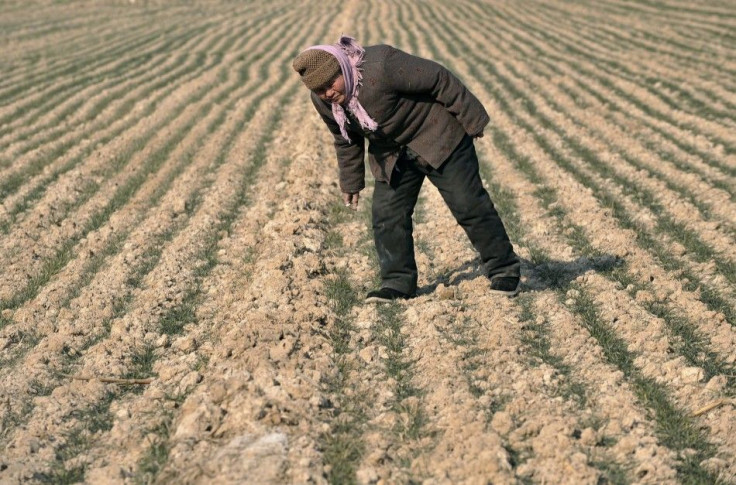Wheat prices fall, despite China drought fears

Wheat prices have fallen for the second straight day, despite fears of a drought in China.
Chicago-traded wheat futures are down about $3 per bushel in mid-day Eastern Time to trade at $859.50. Chinese wheat futures were also down today, according to Agrimoney.
Just two days ago, US-traded wheat futures were trading as high as $893.25, or about 4 percent higher.
The concern is that China, the biggest wheat producer in the world, may need to import wheat (or just export less) to feed its 1.3 billion-population if the domestic harvest is bad, thereby driving up prices worldwide.
The Food and Agricultural Organization (FAO) released a special report on Thursday that highlighted China’s drought problem.
It said below-normal precipitation in the North China Plain threatens to affect 5.16 million hectares, or 20 percent, of China’s wheat-producing lands.
So why then is the rally fading in US wheat futures?
One, the US dollar is stronger, which weakens commodities denominated in dollars.
Two, the drought “has, so far, not affected winter wheat productivity” in China. It only threatens to be a problem if the temperature drops and/or the drought persists into the spring, stated the FAO.
Three, the combination of mild temperatures and snowfall are mitigating the affects of the drought.
Finally, the market may already have discounted the news as astute investors may have tracked the drought for months before the press (and FAO) mentioned anything.
The commodities market is subject to wild swings.
On Feb. 3, 2011, sugar futures plunged as much as 9 percent, after rallying furiously for the previous day, because Cyclone Yasi had not damaged Australia’s sugar crops as much as initially feared.
Email Hao Li at hao.li@IBTimes.com
Click here to follow the IBTIMES Global Markets page on Facebook.
Click here to read recent articles by Hao Li.
© Copyright IBTimes 2025. All rights reserved.





















